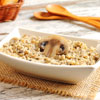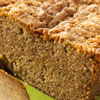Peel, dice and cook the rutabagas in a pot of boiling water for about 45 minutes until fork tender. Remove from heat and drain. Mash the rutabagas and stir in remaining ingredients except the butter. Scoop into a greased casserole dish and dot with the butter. Bake in a pre-heated oven at 350 F for about 45 minutes or until top is light golden brown. Serve hot. Makes 6 servings.



